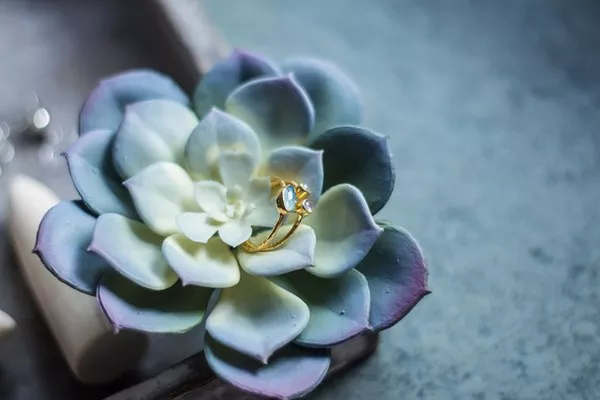Succulents are renowned for their resilience and adaptability, thriving in various environments from arid deserts to lush gardens. While many succulents are known for their preference for sunlight, there exists a diverse array of species that flourish in shade. Understanding the specific needs and characteristics of shade-loving succulents can elevate indoor and outdoor gardening experiences, allowing enthusiasts to cultivate vibrant displays even in dimly lit spaces.
The Unique Appeal of Shade-Loving Succulents
Succulents are often associated with bright sunlight and arid conditions, but shade-loving varieties offer a distinctive charm and versatility. These plants possess adaptations that enable them to thrive in environments with reduced light levels, making them ideal choices for indoor settings, shaded balconies, or garden areas with limited sun exposure.
Factors Influencing Succulent Growth in Shade
Several factors influence the success of shade-loving succulents, including light intensity, duration, and quality. Understanding these elements is crucial for selecting appropriate species and providing optimal growing conditions.
Light Intensity
Shade-loving succulents thrive in environments with low to moderate light intensity. They may exhibit symptoms of stress or etiolation if exposed to excessive sunlight, such as leaf discoloration, stretching, or scorching. Consequently, selecting species adapted to low light levels is essential for maintaining their health and vitality.
Duration of Light Exposure
While shade-loving succulents can tolerate reduced light levels, sufficient exposure to natural or artificial light remains essential for their growth. Providing adequate light duration ensures that plants receive the energy needed for photosynthesis and metabolic processes, promoting robust development and vibrant foliage.
Light Quality
In shaded environments, the quality of light becomes a critical factor influencing succulent growth. While these plants can thrive in dim conditions, ensuring that the available light spectrum includes wavelengths conducive to photosynthesis is essential. Supplemental lighting options, such as grow lights with appropriate spectra, can enhance plant productivity and vitality in indoor settings.
Top Shade-Loving Succulents for Indoor and Outdoor Gardens
Zamioculcas zamiifolia (ZZ Plant)
The ZZ plant is renowned for its resilience and ability to thrive in low-light conditions, making it an excellent choice for indoor spaces with minimal sunlight. Its glossy, dark green leaves add a touch of elegance to any setting, requiring minimal maintenance and thriving despite neglect.
Sansevieria trifasciata (Snake Plant)
With its striking vertical foliage and air-purifying qualities, the snake plant is a popular choice for both indoor and outdoor gardens. It tolerates low light levels with ease and can survive prolonged periods of neglect, making it an ideal option for busy plant enthusiasts seeking low-maintenance greenery.
Haworthia spp. (Zebra Plant)
Haworthias are a diverse genus of succulents known for their intricate rosettes and distinctive striped foliage. While they appreciate bright indirect light, many species can adapt to partial shade or filtered sunlight, making them suitable for indoor settings or shaded outdoor areas.
Gasteria spp. (Gasteria)
Gasterias are prized for their attractive, textured leaves and tolerance for low-light conditions. These succulents feature rosettes of fleshy leaves adorned with intriguing patterns, adding visual interest to shaded garden beds or indoor plant collections.
Epiphyllum spp. (Orchid Cactus)
Epiphyllums, also known as orchid cacti, are epiphytic succulents prized for their stunning nocturnal blooms and cascading foliage. While they benefit from filtered sunlight, they can thrive in shaded environments with minimal direct light, making them suitable for indoor hanging baskets or sheltered outdoor spaces.
Rhipsalis spp. (Mistletoe Cactus)
Mistletoe cacti are epiphytic succulents characterized by their trailing stems and delicate, pendant-like foliage. These plants excel in low-light conditions, making them ideal choices for hanging baskets, terrariums, or shaded outdoor areas where they can add texture and visual appeal.
Aspidistra elatior (Cast Iron Plant)
As its name suggests, the cast iron plant is exceptionally hardy and resilient, tolerating low light levels and neglect with ease. Its glossy, dark green leaves provide year-round interest in shady garden beds or indoor spaces, making it a popular choice for novice gardeners or those seeking low-maintenance greenery.
Key Considerations for Growing Shade-Loving Succulents
While shade-loving succulents offer numerous advantages for indoor and outdoor gardening, several considerations can enhance their growth and longevity:
Well-Draining Soil: Ensure that succulents are planted in well-draining soil to prevent waterlogging and root rot, particularly in shaded environments where evaporation rates may be lower.
Moderate Watering: While shade-loving succulents require less frequent watering than their sun-loving counterparts, it’s essential to monitor soil moisture levels and adjust watering frequency accordingly to prevent dehydration or overwatering.
Air Circulation: Adequate air circulation is crucial for preventing fungal diseases and promoting healthy growth in shaded environments. Avoid overcrowding plants and provide sufficient spacing to facilitate airflow around foliage and stems.
Temperature Considerations: Shade-loving succulents may be more sensitive to temperature fluctuations than sun-loving species, particularly in indoor environments with artificial heating or cooling. Avoid placing plants near drafty windows or heating vents to prevent stress and temperature-related damage.
Regular Maintenance: Although shade-loving succulents require less maintenance than many other plants, periodic grooming and removal of dead or yellowing foliage can promote airflow, prevent pest infestations, and maintain aesthetic appeal.
Conclusion
Shade-loving succulents offer an exciting opportunity to explore the diverse world of these resilient and adaptable plants. By understanding their specific light requirements and selecting suitable species, gardeners can create captivating displays in indoor and outdoor settings, even in areas with limited sunlight. With proper care and attention to environmental factors, shade-loving succulents can thrive and bring beauty to any space, enriching the gardening experience for enthusiasts of all levels.


